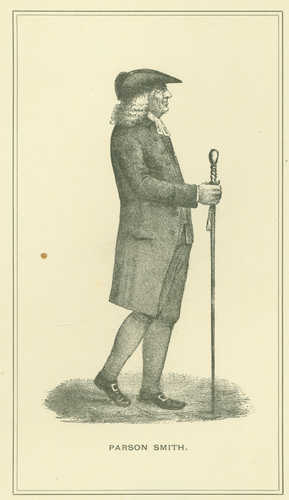Keywords: American Revolution
Item 81321
Tisbury Manor Daughters of the American Revolution, Monson, ca. 1955
Contributed by: Monson Historical Society Date: circa 1955 Location: Monson Media: Photographic print
Item 15489
Houlton Daughters of the American Revolution, 1922
Contributed by: Aroostook County Historical and Art Museum Date: 1922 Location: Houlton Media: Photographic print
Exhibit
Liberty Threatened: Maine in 1775
At Lexington and Concord, on April 19, 1775, British troops attempted to destroy munitions stored by American colonists. The battles were the opening salvos of the American Revolution. Shortly, the conflict would erupt in Maine.
Exhibit
Maine Eats: the food revolution starts here
From Maine's iconic lobsters, blueberries, potatoes, apples, and maple syrup, to local favorites like poutine, baked beans, red hot dogs, Italian sandwiches, and Whoopie Pies, Maine's identity and economy are inextricably linked to food. Sourcing food, preparing food, and eating food are all part of the heartbeat of Maine's culture and economy. Now, a food revolution is taking us back to our roots in Maine: to the traditional sources, preparation, and pleasures of eating food that have sustained Mainers for millennia.
Site Page
Maine's Road to Statehood - The American Revolution and Early Attempts at Separation - Page 1 of 2
"The American Revolution and Early Attempts at Separation Overwhelmingly dedicated to independence from Britain, Mainers quieted any murmurs of…"
Site Page
Maine's Road to Statehood - The American Revolution and Early Attempts at Separation - Page 2 of 2
"The American Revolution and Early Attempts at Separation The committee sent a similar address to the citizens of Maine urging them to support…"
Story
The centuries-long history of Passamaquoddy Veterans
by Donald Soctomah, Passamaquoddy Historic Preservation Office
Passamaquoddy Veterans Protecting the Homeland
Story
Restoring the Penobscot River
by John Banks
My role as the Director of the Department of Natural Resources for the Penobscot Indian Nation
Lesson Plan
Becoming Maine: The Votes for Statehood
Grade Level: 3-5
Content Area: Social Studies
Maine became a state in 1820 after separating from Massachusetts, but the call for statehood had begun long before the final vote. Why did it take so long? Was 1820 the right time? In this lesson, students will begin to place where Maine’s statehood fits into the broader narrative of 18th and 19th century American political history. They will have the opportunity to cast their own Missouri Compromise vote after learning about Maine’s long road to statehood.
Lesson Plan
Grade Level: 9-12
Content Area: Social Studies
Maine's quest for statehood began in the years immediately following the American Revolution. Though the state of Massachusetts consented to the separation in 1819 and Maine would ultimately achieve statehood in 1820, Maine’s split from Massachusetts was not without controversy and was not universally supported by people living in Maine. Using primary sources, students will explore the arguments for and against Maine statehood. Students will gather evidence and arguments to debate the statement: It is in the best interests of the people of Maine for Maine to become its own state.
















